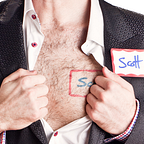Why all NYC subway ads basically look the same
Advertising isn’t about selling, it’s about signaling.
Conveying information about your brand to the market in a way that is costly for the company, and therefore believable for the buyer.
The ad itself might promote the features and benefits of the product, but it doesn’t have to. It’s more about signaling to a specific niche of people that buying the product will solve their problem and increase their status.
Harvard’s primary textbook on macroeconomics explains:
In the signaling theory of advertising, the advertisement itself contains no real information, but the company is signaling the quality of its product to consumers by its willingness to spend money on advertising. Marketing action is being taken not for its intrinsic benefits but because the willingness to take that action conveys private information to someone observing it.
What’s your signaling strategy? Are you willing to overspend on high leverage signals for your new project?
Please note, it’s probably not going to sell thousands of units or earn millions of users. But that’s not the point. Sometimes there’s a larger goal than customer acquisition.
Manhattan subway advertisements are the perfect example.
They all look basically the same, in terms of typography, aesthetic, color palette, quirky line drawings, approachable characters, ad layout and brand voice.
And part of that consistency is because only a few top agencies specialize in these kinds of ads. I used to work for one, and our biggest client was the state department of health. We literally had a template we reused for every new disease, disorder, warning or social activism du jour.
All of our public service announcements all blended together after a while.
Even today, I can pick out which ads on the subway came from my old agency. Which says a lot, for better or for worse.
But this same process applies to startups. Subways have become the advertising epicenter for hot tech startups trying to build a broad market, often aimed at millennial customers.
Direct to consumer brands often secure big rounds of financing, and then deploy their new capital on subway takeover ads. Almost like clockwork.
One week you read about a startup darling that raises twenty million dollars, the next week you see every single poster slot on your train plastered with the same brand of this new kid on the block that customers are supposed to care about.
That’s a high leverage signaling strategy. The brand is demonstrating that they just secured serious venture backing, it’s not another fly by night startup unicorn, and won’t be dissolved in eighteen months when all their cash dries up.
It’s the business equivalent of a peacock’s plume, which the animal uses to attract mates:
Subway ads are less about performance marketing and more about brand awareness.
The return on investment may not be as straightforward as a surge of app downloads or new users, since it’s very difficult to track subways ads when compared to their pay per click counterparts.
Even if the ads do include a call to action like a promo code or a free trail, it’s more about the air of legitimacy than conversions.
Now, your brand may not have hundred thousand dollars to hire an ad agency to design your campaign, and another two hundred thousand dollars a month to spend on the media buy itself.
But signaling strategies can come in all shapes and sizes. It starts with asking yourself:
Where could we deploy capital to convey the quality of our product, simply through the act of the marketing action?
We’re not talking about a thirty second spot during halftime of the super bowl. There are smarter, more specific signaling plays that are worth the investment of a few thousand.
I’m reminded of the conference I keynoted many years ago that sold doormat ad space at the exhibiting hotel. Talk about a stroke of signaling brilliance. If you registered for the conference and booked a room at their flagship hotel, on the morning of day one, you opened your door to a collage of flyers meticulously splayed out underneath your feet.
And every door on your floor had the same. These flyers represented the twelve presenting sponsors who clearly paid big money to be the first brand you saw that day. Creating top of mind awareness on your journey down to the event.
Everyone at breakfast was talking about those flyers. That’s what you call an air of legitimacy.
And it’s funny, I’ve worked at a hotel before and have been asked to execute that exact kind of promotion for guests. All I could think of when I saw the doormat flyers was, wow, some overnight bellhop had to go around to hundreds of rooms and lay every one of those goddamn flyers. Hope they got a good tip.
Remember, it’s not about selling, it’s about signaling.
Kind of like I just did back there with my little story. I mentioned that I was “keynoting” the conference, not attending it. Sick flex, bro.
My suggestion is, find a way to alert a specific niche of people that buying your product will solve their problem and increase their status.
And start flapping your gorgeous plume into the wind.
What’s your business equivalent of the peacock’s feathers?
